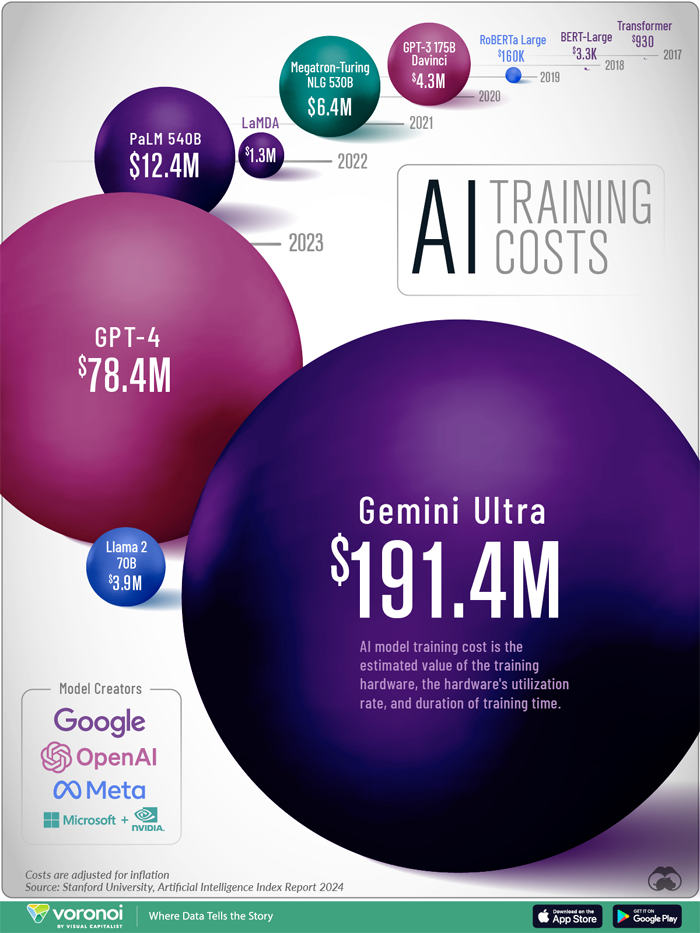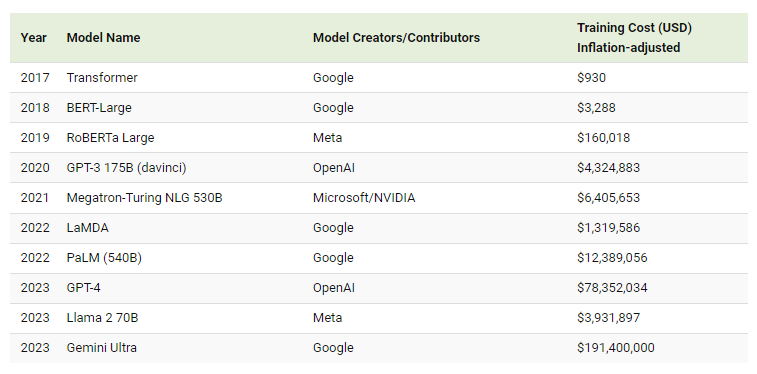Recent advancements in AI technology have been remarkable. Advanced AI models like OpenAI’s ChatGPT and Google’s Gemini Ultra are transforming many aspects of our lives. However, the costs associated with training these AI models have become a significant burden. For instance, the cost of Google’s Gemini Ultra is nearly $200 million. [This is not just a cost issue but a factor significantly influencing the direction of AI technology development.]

Factors Determining AI Model Training Costs
Several factors determine the costs of training AI models. One of the main reasons is the increasing computational demands and the costs of enhancing computing performance. According to Stanford University’s 2024 AI Index Report, the rental prices of cloud computing, the duration of model training, and hardware utilization are key factors.
Key Factors
- Cloud Computing Rental Prices: Due to the nature of AI model training requiring long-term use of high-performance computing resources, costs increase significantly.
- Training Duration: The longer the training period, the higher the costs proportionally.
- Hardware Utilization: While the initial cost of using the latest hardware is high, it can improve cost efficiency in the long run.
Case Study: The Surge in AI Model Training Costs
The graphic below, based on Stanford University’s 2024 AI Index Report, shows the trend of increasing AI model training costs.

Adjusted for inflation since 2017, the training cost for OpenAI’s GPT-4 amounts to about $78.4 million. This shows a significant increase compared to Google’s PaLM (540B) model’s $12.4 million cost just a year earlier.

Meanwhile, Google’s AI model Gemini Ultra cost approximately $191 million. This exemplifies how sharply the costs of training AI models are rising today.
Future AI Model Training and Cost Reduction Strategies
AI companies are exploring various methods to address rising costs. These include creating smaller models designed to perform specific tasks. Additionally, experiments are underway to generate synthetic data internally to feed AI systems.
However, current AI models using synthetic data sometimes provide nonsensical answers to specific questions, experiencing a phenomenon known as “model collapse.” This strongly suggests the need for new training methods.
Conclusion: A Bright Future for AI Technology
The skyrocketing costs of training AI models are undoubtedly a major challenge. However, it also indicates how rapidly AI technology is advancing. We must seek more innovative solutions to address these issues. Stay tuned to these changes, as the future of AI depends on all of us.
Reference: Visual Capitalist, “Visualizing the Training Costs of AI Models Over Time”
